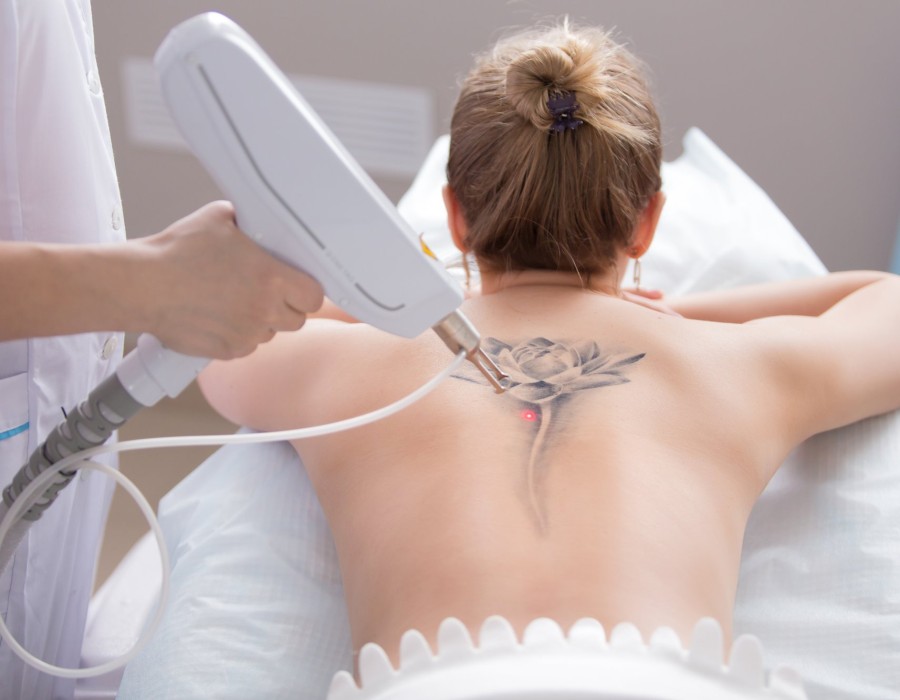The evolving world of aesthetics has made Laser Tattoo Removal in Dubai a popular choice for individuals looking to reverse past decisions made in ink. As more people opt for this procedure, an important question arises: Is laser tattoo removal safe for all skin types? This blog aims to delve into this topic, providing informative insights into the technology, process, and considerations for various skin tones.
Understanding Laser Tattoo Removal
The Mechanism Behind Laser Tattoo Removal
At its core, laser tattoo removal works by using high-intensity light beams to break down the ink particles embedded in the skin. The body’s immune system then gradually eliminates these particles, resulting in fading of the tattoo over time.
Different Types of Lasers Used
Several types of lasers are employed in the tattoo removal process, with Q-switched lasers being the most common. These lasers target specific ink colors without harming the surrounding skin. This makes the procedure versatile as various lasers can be selected based on the tattoo's colors and the patient's skin tone.
Skin Types and Laser Treatments
Fitzpatrick Skin Type Classification
Before diving into the safety of laser tattoo removal, it's essential to understand the Fitzpatrick skin type classification. This system categorizes skin types based on their response to UV light. It ranges from Type I (very fair) to Type VI (dark brown/black). Understanding this classification helps in determining the appropriate laser treatment for individual skin types.
Safe Treatments for Light Skin
For individuals with light skin (Types I and II), laser tattoo removal tends to be safer and more effective. Their skin responds well to the laser with minimal risk of pigment changes or scarring. The contrast between light skin and dark ink allows for better absorption of the laser light, making the procedure more efficient.
Procedures for Medium to Dark Skin
Medium to dark skin types (Types III to VI) may experience more challenges due to the absorption of laser light by melanin in the skin. However, advancements in technology have led to the development of specific lasers that can safely target the ink without causing damage to the surrounding skin. Proper assessment and customized approaches can ensure effective treatments for these skin types.
Factors Affecting Safety in Laser Tattoo Removal
Skin Sensitivity and Conditions
Individuals with underlying skin conditions or heightened sensitivity may require special consideration when undergoing Laser Tattoo Removal. Those with conditions such as eczema, psoriasis, or dermatitis may face additional risks, making it crucial to have a thorough consultation before treatment.
The Importance of Professional Evaluation
Consulting a qualified professional for a detailed skin evaluation is key to ensuring the safety of laser tattoo removal across different skin types. A specialist can assess individual skin characteristics and tailor the treatment accordingly. This personalized approach significantly reduces the risk of adverse effects.
The Role of Aftercare
Post-procedure care plays a pivotal role in ensuring safe outcomes for all skin types. Following treatment, proper aftercare can minimize the risk of complications and aid in healing. This may include avoiding sun exposure, applying soothing creams, or following specific instructions provided by the practitioner.
Myths Surrounding Laser Tattoo Removal
Common Misconceptions
One prevalent myth is that laser tattoo removal is universally safe for all skin types. While advancements in technology have improved safety measures, it’s essential to recognize that individual skin reactions can vary significantly.
Educating for Better Decisions
Understanding the factors that influence the safety of the procedure can empower individuals to make informed decisions. Education on the variability in skin reactions can help dispel myths and ensure a more successful experience.
Alternatives to Laser Tattoo Removal
Non-Laser Removal Techniques
For those who may not be suitable candidates for laser treatments, there are non-laser alternatives available such as tattoo removal creams or surgical excision. Each method comes with its own set of pros and cons, emphasizing the importance of individualized solutions.
The Importance of Consultation for Alternatives
If considering alternatives, consultations with professionals can provide insight into the best possible options based on skin type and tattoo attributes. Thorough discussions can facilitate a clearer understanding of potential outcomes and make individuals feel more comfortable with their choices.
Preparing for the Procedure
Initial Consultation Process
The journey begins with an initial consultation where a practitioner will evaluate your skin type and tattoo characteristics. This is a great opportunity to discuss any concerns and set realistic expectations for the outcome of the Laser Tattoo Removal procedure.
Setting Clear Goals
Discussing personal goals for tattoo removal can significantly affect the treatment plan. Clear communication about desired outcomes ensures everyone is on the same page, leading to a more satisfying experience.
The Laser Tattoo Removal Process
What to Expect During the Session
During the procedure, the laser device is aimed at the tattooed area. Most practitioners apply a numbing cream to minimize discomfort. Sessions typically last anywhere from a few minutes to half an hour, depending on the tattoo’s size and complexity.
Recovery Timeline
After the session, the healing process varies based on individual skin types. Generally, patients can expect some redness and swelling, which typically subsides within a few days. Patients are advised to follow aftercare instructions diligently to ensure optimal results.
Conclusion
In conclusion, Laser Tattoo Removal Treatment provides a viable option for individuals looking to erase their tattoo choices. While it is a generally safe procedure across various skin types, it requires thoughtful consideration of individual skin characteristics and professional evaluation. As the technology continues to improve, the ability to safely and effectively remove tattoos from all skin tones becomes more achievable, enhancing the options available for those seeking change.






Comments